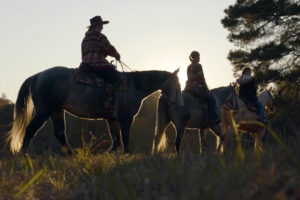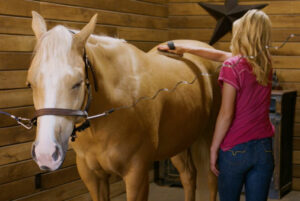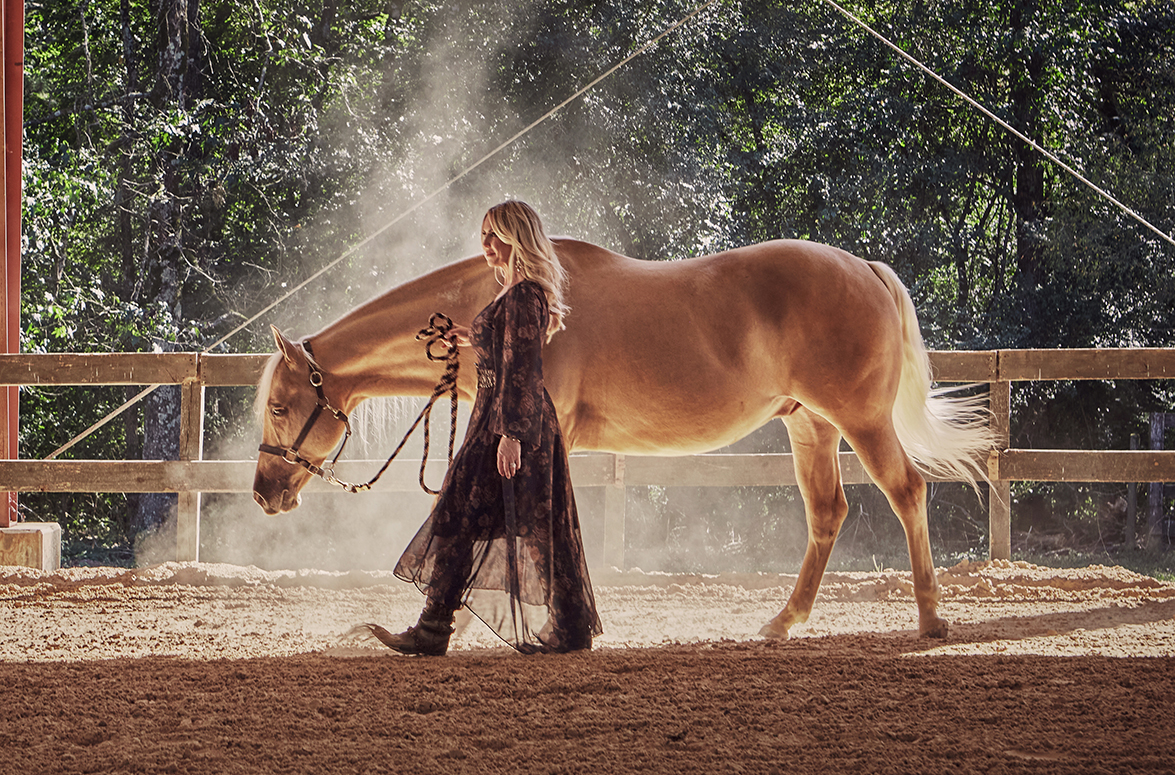These tips are based on our extensive knowledge and experience in bringing all different types, ages and breeds of “new additions” home for the first time. We ask that all customers thoroughly read this page which we created to help you help your new addition to settle in.
1. Horses Are Living Beings with Personalities and Emotions
The first and cardinal rule with horses to remember is that they are, of course, horses! What this means is that they have a personality, a functioning brain, and a body system that is similar in many ways to ours. Remember your first day of school? Some kids were lucky enough to feel right at home, but others were quite devastated. You’d been many places away from home already – to the park, the store, your relatives’ – but each time you were with people you knew, loved, and trusted. School is the first real test you have at being on your own. And, lucky for you, after the first dreadful day of school, you get to go back home to the same people you know, love, and trust.
 You can draw parallel lines between these situations and the ones we put our horses through. Going to horse shows, trail rides, and moving to a new barn presents the horse with a new situation to deal with, but he is with the same people he knows from his regular environment. When a horse is sold, it is like your first day of school, without ever getting to go back home to your parents. It may take the horse a few days, weeks, or months to settle in to his new environment, new people, and new life.
You can draw parallel lines between these situations and the ones we put our horses through. Going to horse shows, trail rides, and moving to a new barn presents the horse with a new situation to deal with, but he is with the same people he knows from his regular environment. When a horse is sold, it is like your first day of school, without ever getting to go back home to your parents. It may take the horse a few days, weeks, or months to settle in to his new environment, new people, and new life.
2. Horses Need Time Before Being Tested
Since horses are horses, and not machines, we recommend giving them time to settle down and adjust to their new home before putting them to tests and judging them. When you come and test out our horses, you see how they act on a day to day basis in their regular environment, an environment in which they are safe and happy. When you put them in a new place, suddenly and without warning, expect them to act differently than they did here. It is not that they have forgotten their training or are trying to cause you worry, it is just their self preservation they have in mind – they are trying to readjust and re-configure their entire system to being in a completely different situation from the one they are used to.
3. Provide a Safe, Secure Space For The Horse
So, now you know what to expect. What should you do, though, to help your new horse settle in as quickly and safely as possible? What we always do is turn a new horse out in a secure, confined area, such as a paddock. This allows the horse to feel as though they are not restrained, as they would feel were they tied up or locked in a stall, while giving them a chance to blow steam if they wish. It also gives them an excellent opportunity to survey their new surroundings, see what is going on, and adjust to it. You should always give the horse at least 24 full hours in the paddock before attempting to ride him/her.
4. Use Grooming as a Technique to Help New Horses Adjust
 Another technique we find useful in helping new horses to adjust and settle in is grooming. Cross tying the horse somewhere where he can still have a view of what is going on around him – such as on a wash rack or facing and open door of the barn – provides you with an opportunity to safely handle and get to know the horse. Grooming is a nice, slow, safe activity that the horse is used to and enjoys, and will help him/her to realize that you are a kind and caring person. Talking to the horse and allowing him/her to smell your hand often also helps them to really get to know you.
Another technique we find useful in helping new horses to adjust and settle in is grooming. Cross tying the horse somewhere where he can still have a view of what is going on around him – such as on a wash rack or facing and open door of the barn – provides you with an opportunity to safely handle and get to know the horse. Grooming is a nice, slow, safe activity that the horse is used to and enjoys, and will help him/her to realize that you are a kind and caring person. Talking to the horse and allowing him/her to smell your hand often also helps them to really get to know you.
5. Saddling, Bridling, and Riding Your New Horse for the First Time
When saddling, bridling, and riding your new horse for the first time, take it slow is the primary rule. While the horse has almost certainly been through this same routine hundreds of times, he still may be frightened about something or other having to do with his recent change of not only location, but entire lifestyle. Remember, horses are animals that respond well to routine and changing owners is a big disruption to that routine. Approach the horse slowly, making sure he/she knows well your location. Allow them to smell whatever it is you have in your hands – be it a saddle, bridle, or blanket. Make sure all of your movements are slow, planned out, and deliberate. Once the horse realizes that being saddled by you is the same as being saddled by anyone else, and wearing your tack doesn’t really feel different from wearing the tack he is used to, he will most likely pass another milestone in accepting his new situation by becoming familiar with yet another new thing.
6. Riding Your New Horse for the First Time
When riding your new horse for the first time continue to follow the take it slow rule. Ride the horse in a confined area at first, and make sure someone knows where you are and what your plans are for the ride. If possible, have someone hold the horse for mounting. Mount the horse slowly and with caution – horses are easier to spook in new places and you never know when something might run out from a bush or behind a car. Having a person he barely knows swinging onto his back like Tarzan on a vine isn’t going to help if something unsettles the horse.
 Once on his back, just walk for a few minutes. There’s no hurry, what you need to do now is get to know the horse, the aids he responds to, what he likes/dislikes, and let him get to know you, your riding habits, and your seat on his back. Once you feel confident that you know what the horse responds to and that you are in control, step it up. Make sure you and the horse can work together safely at every gait before you take him/her out of the arena. If it takes two or three or even more rides for you to feel that way, so be it. Just like the kids at school, some horses are more shy and take longer to adjust. Make sure to be patient and give the horse the time, space, and understanding that he needs to adjust to his new life.
Once on his back, just walk for a few minutes. There’s no hurry, what you need to do now is get to know the horse, the aids he responds to, what he likes/dislikes, and let him get to know you, your riding habits, and your seat on his back. Once you feel confident that you know what the horse responds to and that you are in control, step it up. Make sure you and the horse can work together safely at every gait before you take him/her out of the arena. If it takes two or three or even more rides for you to feel that way, so be it. Just like the kids at school, some horses are more shy and take longer to adjust. Make sure to be patient and give the horse the time, space, and understanding that he needs to adjust to his new life.
7. Introducing Your Horse to New Environments
When you take your new horse out of the arena for the first time, be prepared for anything. If he sees something that spooks him, walk him up to it, even if you have to get off of his back and lead him. Make him tackle any obstacle he hesitates at – especially if you know he has done it before. Most likely, once he has overcome the situations that are “scary” in his mind with you as his partner, it will build his trust in you as well as help him to realize that his new environment isn’t full of horse killers after all.
8. Helping Your New Horse Adjust to Their New Home
 In our experience, it can take horses anywhere from one week to six months to settle down and accept their new home. Most of them do become increasingly comfortable as time goes by, and you may notice a difference in their behavior after two days, again after two weeks, and again after two months, where as some might suddenly adjust and settle back down to their old selves after a certain period of time. It is your job to help the horse in every way you can to keep him calm and help him to adjust, no matter how long it takes him. Keep in mind all the time that the whole situation is extremely stressful on a horse. Some things he may have done fine when you test rode him he may now be acting like he’s never done before, but it will pass. Once he knows and trusts you, and you him, you’ll both be on the road to a happy partnership.
In our experience, it can take horses anywhere from one week to six months to settle down and accept their new home. Most of them do become increasingly comfortable as time goes by, and you may notice a difference in their behavior after two days, again after two weeks, and again after two months, where as some might suddenly adjust and settle back down to their old selves after a certain period of time. It is your job to help the horse in every way you can to keep him calm and help him to adjust, no matter how long it takes him. Keep in mind all the time that the whole situation is extremely stressful on a horse. Some things he may have done fine when you test rode him he may now be acting like he’s never done before, but it will pass. Once he knows and trusts you, and you him, you’ll both be on the road to a happy partnership.

